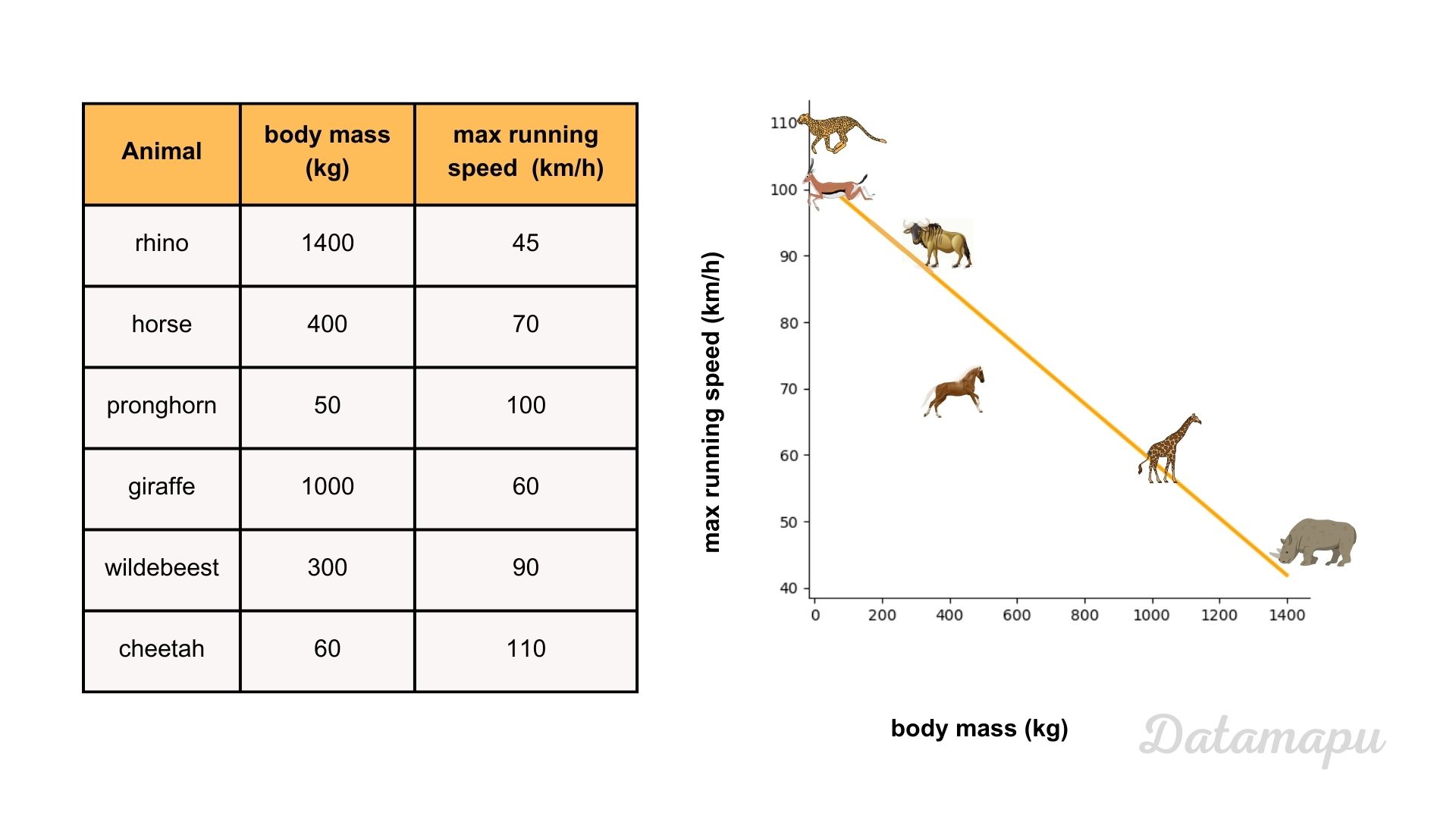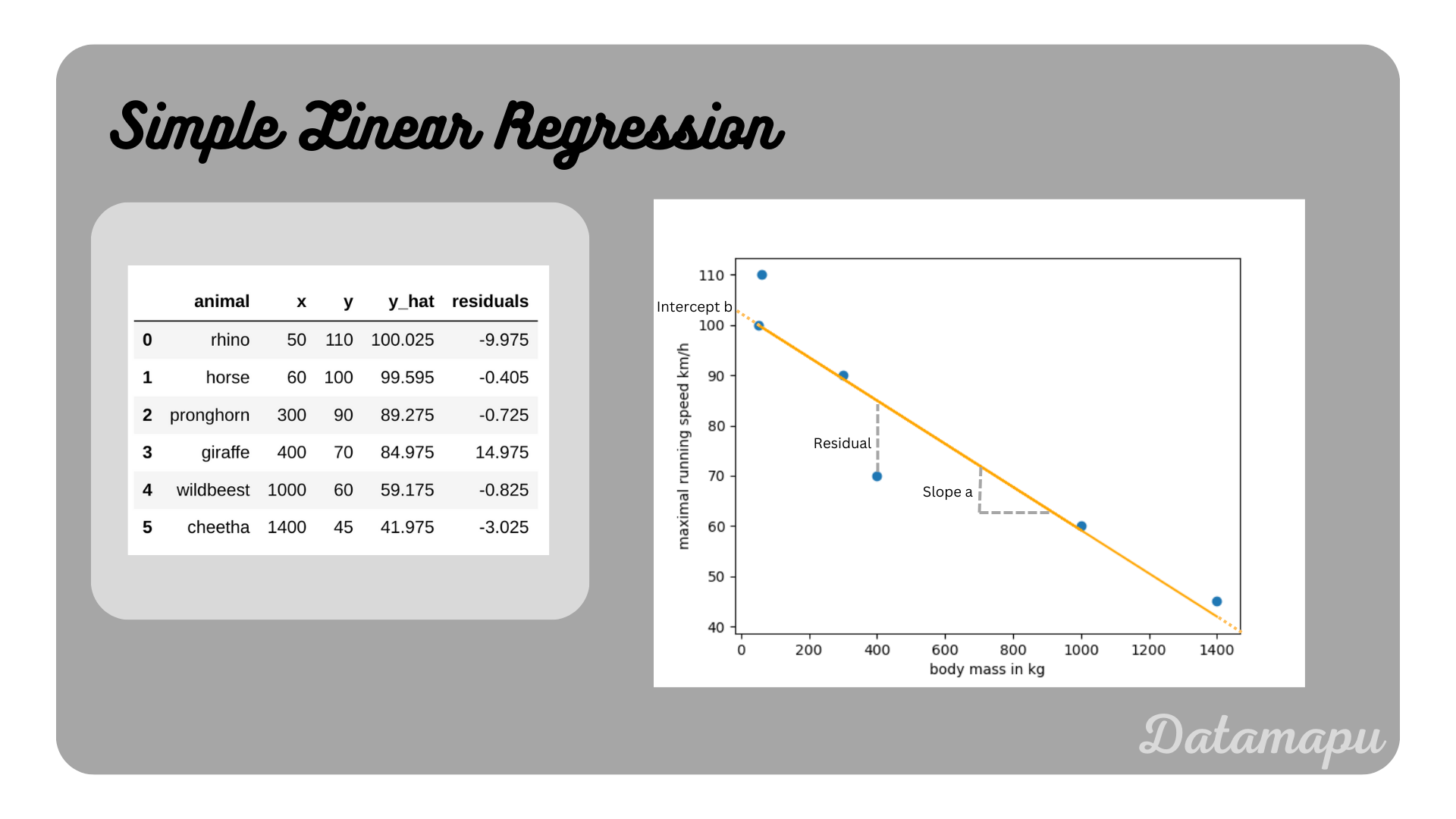Linear Regression - Analytical Solution and Simplified Example
- 5 minutes read - 883 wordsIntroduction
In a previous article, we introduced Linear Regression in detail and more generally, showed how to find the best model and discussed its chances and limitations. In this post, we are looking at a concrete example. We are going to calculate the slope and the intercept from a Simple Linear Regression analytically, looking at the example data provided in the next plot.
 Illustration of a simple linear regression between the body mass and the maximal running speed of an animal.
Illustration of a simple linear regression between the body mass and the maximal running speed of an animal.
Fit the Model
We aim to fit a model that describes the relationship between the body mass (independent variable / input feature
with
Minimize the Loss
In real applications optimization techniques, such as Gradient Descent are used to estimate the minimum of the Loss Function. In this article, we will calculate the coefficients
Setting these equations to zero and multiplying both sides with
We will start with the second equation and resolve it for
with
Now, we continue with the first equation and resolve it for
We use the equation we resolved for
With that, we can calculate the coefficients
Note, as we know from calculus setting the first derivative, i.e. the gradient to zero is not a sufficient condition for a minimum. For this example, we assume that the only location with zero gradient is a minimum. To be sure that this is really a minimum we would need to check all second derivatives. At this point, it could also be a maximum or a saddle point. This is however not the scope of this article.
Example
We now use the data presented above to determine the linear relationship between the size and the speed of an animal, represented by
with
This results in
With that we can calculate
which gives
rounded up to 3 digits. With this we can calculate
The resulting linear regression model and the original data is illustrated in the following plot.

Note, for this simplified example, we are not going to check the assumptions that need to be fulfilled for a Linear Regression. This example is only for illustration purposes, with this little amount of data statistical tests are not reasonable.
If this blog is useful for you, please consider supporting.
